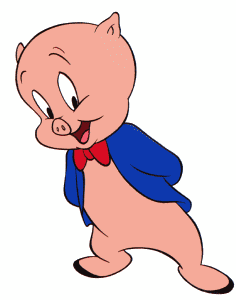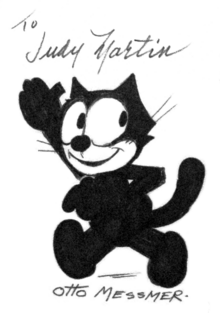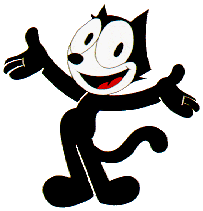When putting together a group of
characters with special abilities, (or sometimes without), I find it
important to follow some guidelines, to keep your team relevant and
uncrowded.
Basically you don't want 14 characters
on a team who all have flight, invincibility, and super strength. Nor
do you want to end up with an arsenal of 5 different colored energy
blasts.
A good example is the avengers.

While they may be able to make a good
movie, there is a lot of redundancy in Marvels leading super hero
team. Pretty much everyone on the team is
able to take a hit, shoot a blast, lift something heavy, and fly
through the air.
Or they're fighting hand to hand.

And they all do it through
science/technology.
It gets a little old people.
I think it's vital to keep track of the
archetypes you're working with, and try to work roughly within the
realm of one each. Some examples:
SNIPER
 The sniper is just that; a specialist
in long range attacks. This may be through a weapon or a power but
always on the offensive side. Basically this character uses their
ability to cause HARM while staying out of the fight. Some snipers
may use a travel power like flight to keep their distance. Others may
choose to hide in their surroundings like a ninja. Whatever the form,
the sniper chooses to act on the OFFENSIVE, yet their approach is
always DEFENSIVE.
The sniper is just that; a specialist
in long range attacks. This may be through a weapon or a power but
always on the offensive side. Basically this character uses their
ability to cause HARM while staying out of the fight. Some snipers
may use a travel power like flight to keep their distance. Others may
choose to hide in their surroundings like a ninja. Whatever the form,
the sniper chooses to act on the OFFENSIVE, yet their approach is
always DEFENSIVE.
TANK
 The tank is well known in the gaming
world as the indestructible wall whom the other players hide behind.
This role is expanded however, in fiction where personal action is
vital and where the characters often find themselves split up and
unable to rely on a meat shield.
The tank is well known in the gaming
world as the indestructible wall whom the other players hide behind.
This role is expanded however, in fiction where personal action is
vital and where the characters often find themselves split up and
unable to rely on a meat shield.
The classic Tank has vast amounts of
either Toughness, or Strength... or both. Which is sometimes ok, if
you want your tank to specialize in being an unstoppable mayhem
machine, just be sure to watch the other attributes like speed,
smarts, combat ability, as that kind of power can quickly get out of
hand.
Then you have a PARAGON to deal with.


SCRAPPER
 The little guy who doesn't look like he
can do much damage but can pack a wallop when you're not looking.
This usually comes in the form of the UN-POWERED CHARACTER.
The little guy who doesn't look like he
can do much damage but can pack a wallop when you're not looking.
This usually comes in the form of the UN-POWERED CHARACTER.The trick is to focus on things like speed, agility, acrobatics, things that allow the character to overcome their lacking in raw power and get around their enemies strengths. A good tactic is to keep these attributes to this character alone. That way they stand out.
MAGE
 Also taken from the gaming world, I
use the word MAGE to refer to one who uses tactics other than
straight out offense or defense. A magician can be a form of this
archetype but so could a beast master, or an inventor.
Also taken from the gaming world, I
use the word MAGE to refer to one who uses tactics other than
straight out offense or defense. A magician can be a form of this
archetype but so could a beast master, or an inventor.NOTE:
(This means Captain Nemo not Iron Man)
The MAGE often finds him or her self acting as support using things like telekinesis to help their allies and hinder their foes. Or they may be a mastermind who commands others to do their bidding.
SPECIALIST
 Not to be confused with the MAGE, a
SPECIALIST can be similar in style (like an animal trainer for
instance.)
Not to be confused with the MAGE, a
SPECIALIST can be similar in style (like an animal trainer for
instance.)The difference is the SPECIALIST is someone who does ONE thing really well. Travel powers like Super speed and Teleportation are generally good when left in the hands of a single user, and better when that's generally all the user can do.
The thing about some abilities is that they get overly powerful fast. Things like invisibility, invincibility, mimicking, and mind control are so easy to use effectively and so annoying for someone else to have to fight. It's best not to add to the cheapness.
OR
Try adding a power that works directly
with the first; like running real fast lights you on fire, or having
electrical powers that allow you to absorb into a power line. Another
good idea Is to have a drawback to a host of abilities. i.e.: Ghost
powers that let you be invisible, intangible, fly, and use
telekinesis, but no one can see, touch, or hear you.
GADGETTEER
 When Tony Stark puts on a metal suit.
He quickly becomes a PARAGON. This is a character that for all
intense purposes comes off far too powerful. That is, unless of
course you're a Dragon-ball worshiping, perfectionist, power monger
with a geek level of OVER 9000!
When Tony Stark puts on a metal suit.
He quickly becomes a PARAGON. This is a character that for all
intense purposes comes off far too powerful. That is, unless of
course you're a Dragon-ball worshiping, perfectionist, power monger
with a geek level of OVER 9000!
It's hard to be a team player when
you've got everyone elses abilities put together.
On the other hand if you can manage to
tone things down a bit, then the character with magical armor, the computer
hacker with a mechanical glove, or the gadget collector with an unlimited supply of goodies, can be just what is needed to fill in
the gaps. A few tricks here and there, a little bit of improv, and
maybe some light crossover with a team member or two, and you've got
yourself a living skeleton key to unlock all those pesky obstacles in
your way.
Here's how it might work out:
I like to put the TANK and SCRAPPER together. Because they are allays opposites, they can play off each others weaknesses: Speed for strength, damage for toughness, whatever. And because they are usually both melee, they can easily be set in the same area. It's quite fun and interesting to see the TANKER take a hit while the SCRAPPER dodges one; or a large punch followed by a quick “Hiya!”
Where the characters powers are
more specific and narrowly defined.
But notice, even then they add a couple scrappers.
I guess you can never have too many of those.
A few other good rules:
DON'T OVERPOPULATE
Keep the number of characters between about 4 and 7. Unless you intent to pull a Justice League Unlimited and just pick and choose randomly every time.
NOT TOO MANY FLYERS
Only one or two characters should be
able to fly. Flight gives WAY too much freedom to most characters. especially if they already have a lot of power.
NOT TOO MANY RANGERS
You don't want to over rely on ranged
attacks then the action really just becomes a shooting range. Unless you're writing about a band of Navy SEALS, let
those who can handle the melee stay close up.
ONLY ONE INVINCIBLE
I personally prefer to keep all my characters
vulnerable to an extent, but if you HAVE to make a character
invincible, you should keep them unique. Their presence on the
battlefield will be all the more important that way.
ONLY ONE UNPOWERED CHARACTER
My own little pet-peeve. This is to keep the unpowered character relevant and useful.
I'll explain more about this in another post.
NEVER HAVE AN AQUAMAN
I'll explain more about this in another post.
NEVER HAVE AN AQUAMAN
If you a re a fan of Aquaman don't fret. He's not a bad hero. I'll explain this too in another post





















































